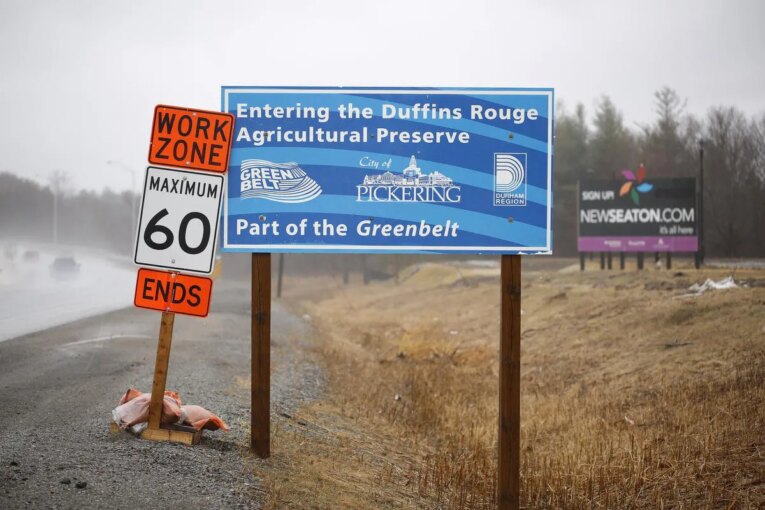
The province announced a proposal for a new provincial park near Uxbridge on Saturday — Earth Day — as an environmental group slammed the government’s plan to develop the nearby “crown jewel” of Ontario’s Greenbelt lands.
“Creating the province’s first urban provincial park in Uxbridge would be a major step forward for conservation and biodiversity protection in Ontario,” said Environment Minister David Piccini in a news release. He noted the government’s proposal for a new park, first announced in the provincial budget last month, may include up to 532 hectares (1,315 acres) of provincially-owned land in the Oak Ridges Moraine. But first, he is calling for a study “to identify the full recreational and protection potential of an urban provincial park in this area.”
The study area, the press release said, may include the Durham Regional Forest’s 598 hectares (1,477 acres), which is owned by the Region of Durham, and possibly 120 hectares (300 acres) from the Township of Uxbridge. As well, the assessment is to include consultations with Indigenous communities, the public and environmental groups.
“Obviously, anything to permanently protect more land in Ontario is a good thing,” said Tim Gray, executive director of advocacy group Environmental Defence, “but in no way does this counterbalance going back on the commitment to never touch the Greenbelt.”
Gray said Environmental Defence commissioned a report on the sensitivity of the Duffins Rouge Agricultural Preserve (DRAP) near Pickering — a 17-square-kilometre area of farms, forests and wetlands, about 30 km south of the Uxbridge region and known as the Greenbelt’s “crown jewel” — after the province stripped it of protections last year.
Titled “Developing Disaster,” the report said that 33 animal species found under the federal Species At Risk Act — including the red-headed woodpecker, the monarch butterfly and the tricoloured bat — as well as wetlands, streams and farmland will suffer under provincial development plans.
The loss of natural ecosystems, Gray said, isn’t the only problem.
“It’s also the fact that it signals to developers that future removals are possible if you have the right connections to the government,” he said.
The provincial government’s proposal for a new urban park has emerged in the midst of ongoing controversy over the removal of protections from Greenbelt lands that will enable developers to build new subdivisions on land that was purchased while still protected.
Star/Narwhal investigations have found that, of the 15 areas slated to be removed from the Greenbelt, eight include properties purchased while Premier Doug Ford’s government was in power. During Ford’s 2018 campaign, he was recorded telling a private audience that, if elected, he’d “open a big chunk” of the protected land.
In the case of the DRAP land development plans, the federal government intervened.
In March, federal Minister of Environment and Climate Change Steven Guilbeault announced that Canada’s Impact Assessment Agency would conduct an assessment of the impact of building within the DRAP area.
The federal assessment, the Environmental Defence report said, will look at species at risk, water quality, migratory birds, natural areas, and include the nearby Rouge National Urban Park.
Gray said Environmental Defence commissioned their study to help focus information for the federal assessment by analyzing numerous previous reports written on the sensitivity of DRAP land. The Star received an advance copy of “Developing Disaster: Exploring the Species and Ecosystems at Risk in the Greenbelt’s Duffins Rouge Agricultural Preserve.”
The analysis found several key areas of risk.
In addition to threats to 33 birds under the Species At Risk Act, the report forecasts problems for another 49 species of birds protected under the Migratory Birds Convention Act; the polluting of 14 fish-bearing stream tributaries from seven cold water stream beds; and the paving up to 400 hectares of forest and a wetland in a headwater zone.
“This is an essential part of the Greenbelt that protects some of the most valuable agricultural land in all of Canada and supports the ecological integrity of the neighbouring Rouge National Urban Park … the only national urban park in Canada,” the report said.
“Developing Disaster” recommends the federal study include forecasts on contaminants in DRAP lands and ensure that “all natural lands within the DRAP are evaluated for their significance and protected accordingly.”
does not endorse these opinions.
You can read more of the news on source



